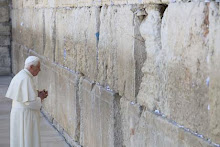
I am back from my pilgrimage to Catalonia, Spain and had the opportunity to pray the Holy Rosary at the physical location where Jesus was tempted by Satan, an experience I will have to share with you at a later time because it is Holy Week and time to move forward into the Pascal Mystery of salvation.
This weeks blog is the meanings and mysteries behind the "Crown of Thorns". The picture above is the actual relic of two of the thorns worn by Jesus in his Passion. There are many of the actual thorns preserved for veneration throughout the world but these are kept in the Rome at the church "Basilica de Santa Croce Gerusalame" or the Church of St Helen. You will notice the long and thick pointed thorns and I will explain their significance but first read the scriptures for a better understanding:
"He was wounded for our transgressions, crushed for our iniquities; by his wounds we are healed" ( Isaiah 53 )
focus on the word "Crushed" as we move forward to the Gospel of St Matthew:
"and plaiting a crown of thorns they put it on his head, and put a reed in his right hand... they offered him wine to drink, mingled with gall; but when he tasted it, he would not drink it." ( Gospel of St Matthew 27 )
In the Old Testament, in the sacrifice offered by Abraham he lays his only begotten son Isaac on the altar for sacrifice but before he carries out the instructions from the Lord the angel from heaven stops him and offers the male sheep/ram caught in the thicket of thorns as most early Church Fathers agree this was a pre-figured "Type" of the crown of thorns worn by the male lamb of God in Jesus Christ, to the first plague of Moses when he changed the waters of the Nile River into blood driving his staff into the waters just as the soldiers use the reed to drive and crush the crown of thorns into the skull of the true innocent Lamb.
The Nile River was surrounded by two natural items; reeds and acacia trees. Acacia wood is a thorny bush used for the construction of the Ark of the Covenant and the altar of sacrifice at "Yam Kippur", due to its strong and indestructible properties. The acascia around the Nile was called "Acacia Nilotica" which means "The Thorns of the Nile". These thorns produce high dosages of tannins used in the fermentation of red wine to remove the sour and bitterness in wine; in other words, the tannins give wine their great flavors and without them wine is undrinkable and you would have to spit out and unable to consume. This points us forward to the first miracle of Jesus at "The Wedding Feast of Cana" exposing his divinity for the first time by changing the water into wine, six full vessels.
By now we are beginning to notice the unveiling of the Crown of Thorns undergoing their complete meaning. The outer layer of the skull is called the "Dura Mater" which means "Tough Mother". It requires a strong thorn such as the acacia thorn to penetrate the dura mater of the skull and crush the skull in order to release the tannins into the blood stream of the wine-blood of Christ therefore fermenting his wine-blood for the "Seven Last Words" from the cross that was left incomplete in the six vessels of wine at the Wedding Feast of Cana. When the soldiers offered Jesus the unfermented sour wine of the Old Covenant, the Navarre Bible states;
"And no one puts new wine into old wine skins; if he does , the wine bursts the skins, and the wine is lost, and so are the skins; but new wine is for fresh skins." ( Gospel Of St Mark commentary 2:22 )
Jesus could have drank the sour wine mixed with gall but he would have been unable to cry out the "Seven Last Words" that were necessary for the fulfillment of the Old Testament prophesies.
We have concluded the sour wine of the Old Testament was unable to free mankind from the slavery of sin and now we have the new wine present in the wine-blood of Jesus Christ that all began from Abraham to Moses and now manifested in the Gospel of Jesus Christ manifesting itself in the Crown of Thorns of the "Pascal Mystery"! Drink the cup of salvation with great joy and hope understanding it was poured out for you when the side of Christ was pierced releasing the fermented waters of baptism and fermented wine -blood of the Eucharist unveiled for us in the consummation of Christ's wedding vows with his One, Holy, and Apostolic Church.
Have a wonderful Pascal Mystery in Easter





